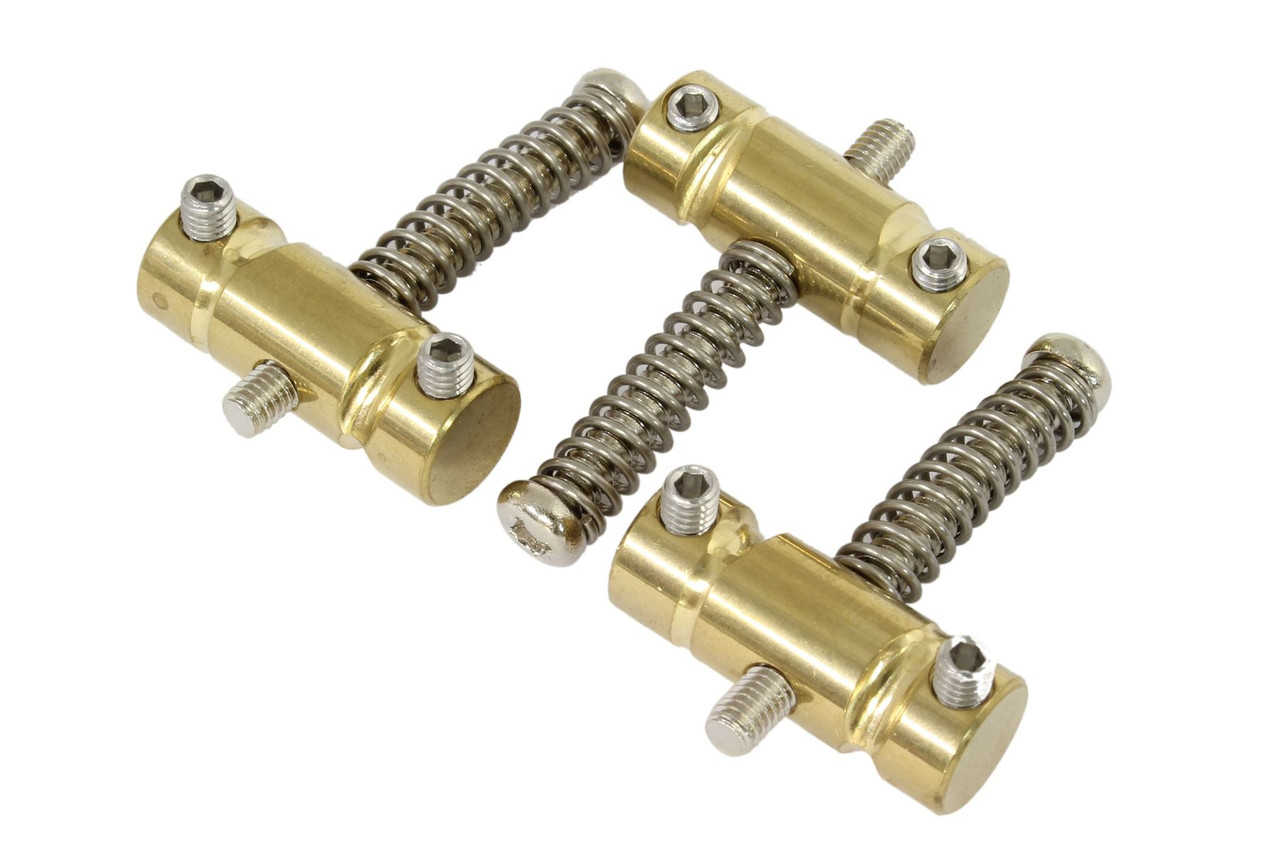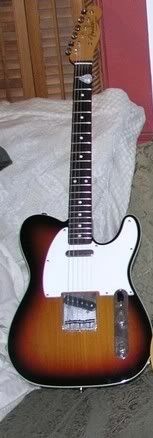Here is my lefthanded MIJ tele bridge; I know, I know, she's beautiful... 


(The bridge looks fine when played or viewed from a 'normal' distance, but in these pics and upon closer inspection, the metal work looks pretty shoddy! Maybe I'll go OCD and get a new bridge too...)
I haven't touched the guitar, not even any setup work, just getting to know the guitar still. But, just because I like the look and setup work will need to start soon (oh yeah, a change of strings might be of use too! ), I bought these:
), I bought these:

MIJ righthanded compensated telecaster saddles.
Here they are out of the packet, they are very nicely made, look and feel great

Now, some of you folks may think I made an error buying right handed compensated saddles for a left handed guitar. But, no, they are reversible:

However, as simple as this is to you folks in the know and have played around with tele saddles for decades, for me, a virgin in this territory, it posses a dilema: WTF does reversible mean in the context of compensated guitar saddles?
Does it mean just whip them over and take the studs out (and/or the intonation screws) and put them in the other side? Does in mean just take out the intonation screw and put it in the from the other side (with or without turning the saddle over)? Does it mean that the LowE/A saddle remains the LowE/A saddle, so needs to be moved across on a lefthander (aswellas/and/or/either changing the height screws and intonation screws and turning the saddle over), and the same for the D/G and B/HighE (although, I'm sure somebody told me that the three don't work the same way, two work one way and the third one the other way - whichever one that was/is?).
I know this is simple, but I've thoroughly confused meself!

Please help.



(The bridge looks fine when played or viewed from a 'normal' distance, but in these pics and upon closer inspection, the metal work looks pretty shoddy! Maybe I'll go OCD and get a new bridge too...)
I haven't touched the guitar, not even any setup work, just getting to know the guitar still. But, just because I like the look and setup work will need to start soon (oh yeah, a change of strings might be of use too!
 ), I bought these:
), I bought these:
MIJ righthanded compensated telecaster saddles.
Here they are out of the packet, they are very nicely made, look and feel great

Now, some of you folks may think I made an error buying right handed compensated saddles for a left handed guitar. But, no, they are reversible:

However, as simple as this is to you folks in the know and have played around with tele saddles for decades, for me, a virgin in this territory, it posses a dilema: WTF does reversible mean in the context of compensated guitar saddles?
Does it mean just whip them over and take the studs out (and/or the intonation screws) and put them in the other side? Does in mean just take out the intonation screw and put it in the from the other side (with or without turning the saddle over)? Does it mean that the LowE/A saddle remains the LowE/A saddle, so needs to be moved across on a lefthander (aswellas/and/or/either changing the height screws and intonation screws and turning the saddle over), and the same for the D/G and B/HighE (although, I'm sure somebody told me that the three don't work the same way, two work one way and the third one the other way - whichever one that was/is?).

I know this is simple, but I've thoroughly confused meself!


Please help.

Last edited:



















